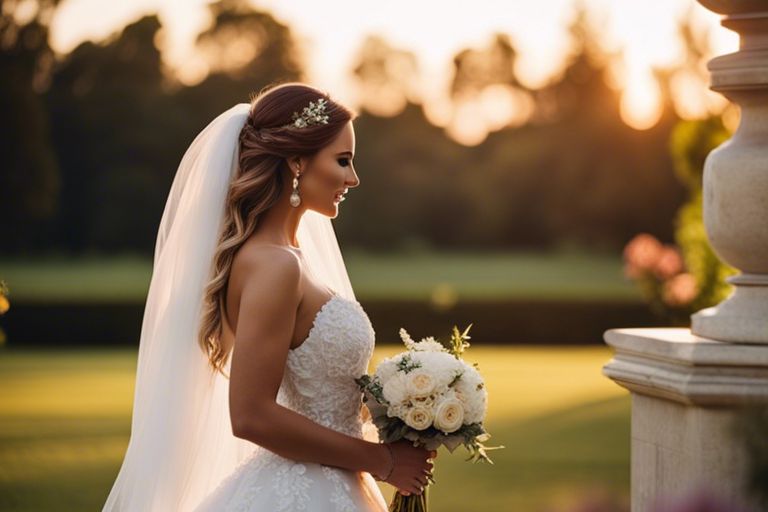You dream every aspect of a wedding, down to the last detail. Capturing those priceless moments requires skill, patience, and an artistic eye. Wedding photographers work tirelessly behind the scenes to immortalize the magic of a couple’s special day. From early morning preparations to the final dance at the reception, they are there to document every tear, smile, and embrace. Learn about the challenges and rewards that come with this role as we research into a day in the life of a wedding photographer.
Key Takeaways:
- Early Mornings and Late Nights: Wedding photographers often start their day early to capture pre-ceremony moments and stay late to shoot the reception and party.
- Adaptability is Key: Being able to adjust to different lighting conditions, changing schedules, and unexpected moments is crucial for a wedding photographer.
- Building Relationships: Establishing a connection with the couple and their families is imperative for capturing genuine emotions and creating beautiful memories that will last a lifetime.
Preparing For The Big Day
Any wedding photographer knows that preparation is key to capturing the perfect moments on the big day. Whether it’s double-checking your gear or mapping out the venue, being ready is necessary. To get a glimpse into the behind-the-scenes action of a wedding photographer, check out Behind the Lens: A Day in the Life of a Wedding Photographer.
The Night Before: Checklist and Gear Preparation
Preparing for a wedding shoot starts the night before. This is when a meticulous checklist is your best friend. Ensuring all equipment is clean, charged, and working optimally is crucial. Many photographers lay out their gear the night before to avoid any last-minute rushes. Double-checking your camera bodies, lenses, batteries, memory cards, and lighting equipment is a must to prevent any technical mishaps on the day of the event.
Early Morning Routines: Starting The Day Right
Before the sun rises on the day of the wedding, a photographer’s morning routine sets the tone for the day. Waking up early allows for a peaceful start and time to review the schedule. A healthy breakfast and plenty of water are necessary to keep energy levels up throughout the long day ahead. Some photographers take this time to meditate or visualize the shots they want to capture, ensuring they are mentally prepared for the job ahead.
Before heading out to the venue, it’s crucial to do a final gear check. All equipment should be securely packed and ready to go. Making sure you have backup gear for every necessary item can be a lifesaver if something goes wrong. Being organized and prepared allows a wedding photographer to focus on what really matters – capturing beautiful moments that will be cherished for a lifetime.
Capturing the Moments
You can read more about the intricacies of a wedding photographer’s day in my blog post Behind the Lens: A Day in the Life of a Toronto Wedding Photographer. In the whirlwind of emotions, laughter, and tears that is a wedding day, capturing the moments becomes the essence of our work as photographers. It’s about freezing time, preserving the fleeting expressions, and encapsulating the love shared on this special day.
Ceremony Essentials: Keys to Shooting the I Dos
Moments during the ceremony are incredibly poignant and must be approached with utmost sensitivity and precision. As a photographer, understanding the flow of the ceremony and knowing when to anticipate key moments is crucial. From the exchange of vows to the first kiss, each second is precious and requires careful attention to detail. It’s not just about capturing the obvious moments but also the subtle glances, the nervous smiles, and the tender gestures that convey the depth of emotions.
Reception Radiance: Documenting the Celebrations
For the reception, the atmosphere shifts to one of jubilation and revelry. As a photographer, this is where you have the opportunity to document the celebration in all its glory. Capturing the joy on the dance floor, the heartfelt toasts, and the spontaneous moments of laughter are key to reflecting the essence of the evening. The challenge here lies in maneuvering through the crowd, adjusting to different lighting conditions, and ensuring that no moment is missed.
Plus, being prepared to capture unexpected moments such as surprise performances, emotional reunions, or impromptu speeches adds an element of excitement to the reception coverage. It’s about being in tune with the energy of the event and ready to capture the fleeting yet memorable instances that make the celebration truly unforgettable.

Challenges and Overcoming Them
Tackling Unexpected Issues
After years of experience as a wedding photographer, I have learned that no two weddings are the same, and there will always be unexpected issues that arise. Whether it’s bad weather, equipment malfunctions, or last-minute changes to the schedule, being prepared to tackle these challenges is crucial.
One of the key strategies I use to handle unexpected issues is to always have a backup plan in place. This could involve having spare equipment on hand, scouting the venue ahead of time for alternative photo locations, or having a flexible timeline that can accommodate any last-minute changes.
Achieving Perfection Amidst Chaos
Unexpected challenges can often lead to chaos on a wedding day, but as a wedding photographer, it’s crucial to maintain calm and composure in order to achieve perfection amidst the chaos. This means remaining focused on the task at hand, adapting quickly to changing circumstances, and always keeping the couple’s best interests in mind.
When faced with chaos, I find that communication is key. By effectively communicating with the couple, the wedding party, and any vendors involved, we can work together to find solutions and ensure that the day runs as smoothly as possible. By staying organized, staying positive, and staying flexible, I can help turn any chaotic situation into a successful photo opportunity.
After all, the ability to achieve perfection amidst chaos is what separates a good wedding photographer from a great one.
Post-Wedding Workflow
All successful wedding photographers know that the work doesn’t end when the event day does. Post-wedding workflow is crucial in delivering exceptional images and ensuring client satisfaction. From image selection and editing to final delivery and client feedback, this part of the process is where the magic happens.
Image Selection and Editing: Crafting the Final Product
One of the most important aspects of post-wedding workflow is the selection and editing of images. This is where the artistry of the photographer truly shines as they meticulously go through hundreds, sometimes thousands, of images to choose the best ones that will tell the story of the wedding day. Editing is an equally vital step where the photographer enhances the chosen images, ensuring they are consistent in style and quality.
Delivery and Client Feedback: The End of the Journey
Once the images have been carefully selected and edited, it’s time for delivery to the clients. This is a crucial moment as it marks the end of the photographer’s journey with the clients. Client feedback is eagerly awaited at this stage, as it provides valuable insights into the clients’ satisfaction and allows the photographer to make any necessary adjustments before finalizing the project.
Post-wedding workflow is where the wedding photographer’s professionalism and attention to detail truly come to the forefront. It is a time-consuming process that requires dedication and skill to ensure that the final product exceeds the clients’ expectations and leaves them with memories to cherish for a lifetime.
Final Words
The life of a wedding photographer is one that requires dedication, creativity, and a keen eye for detail. From early morning preparations to late-night editing sessions, the work of a wedding photographer is no easy task. However, the reward comes in capturing those special moments that will be cherished for a lifetime. Behind the lens, a wedding photographer must be a master of their craft, able to navigate through different lighting situations, pose couples effortlessly, and capture the emotions of the day. It is a job that requires passion, patience, and perseverance, but in the end, the joy of delivering stunning photographs to happy couples makes it all worth it.
FAQ
Q: What does a wedding photographer do on a typical day?
A: A wedding photographer starts the day by preparing their equipment, reviewing the client’s shot list, and scouting the wedding venue for the best photo spots. During the wedding, they capture key moments such as the ceremony, exchange of vows, first dance, and cake cutting. After the event, they edit and enhance the photos to deliver a stunning final product to the clients.
Q: How do wedding photographers prepare for a shoot?
A: Wedding photographers prepare for a shoot by ensuring their equipment is in top condition, charging batteries, formatting memory cards, and creating a shot list with the clients. They also familiarize themselves with the wedding venue, lighting conditions, and backup plans in case of unforeseen circumstances.
Q: What challenges do wedding photographers face during a wedding shoot?
A: Wedding photographers face various challenges during a wedding shoot, such as managing time efficiently, dealing with unpredictable weather conditions, handling demanding clients or family members, and adapting to different lighting situations. They must stay calm under pressure and be prepared to think on their feet to capture beautiful moments.
Q: How do wedding photographers ensure client satisfaction?
A: Wedding photographers ensure client satisfaction by communicating effectively, understanding the client’s vision, and delivering high-quality photos that capture the essence of the wedding day. They may offer sneak peeks, online galleries, and quick turnaround times for photo delivery to exceed client expectations.
Q: What sets a great wedding photographer apart from the rest?
A: A great wedding photographer stands out by having a unique style, attention to detail, creativity in capturing moments, excellent communication skills, and the ability to make clients feel comfortable in front of the camera. They continuously hone their skills, stay updated on industry trends, and go above and beyond to create lasting memories for their clients.



